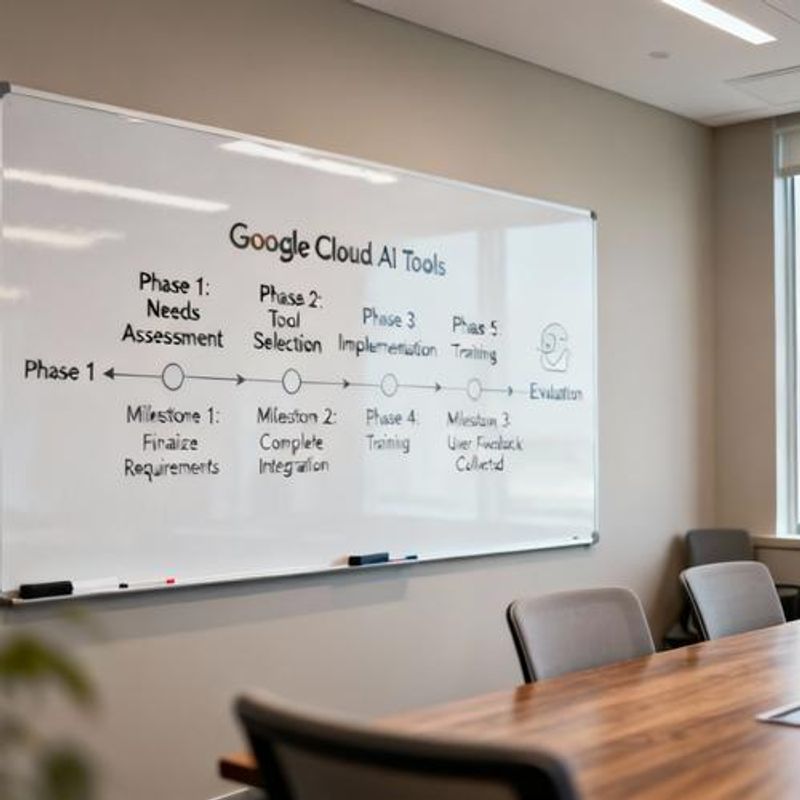Complete Guide to Google Cloud AI Tools for Data Analysts: Transform Your Analytics Workflow

Manual data processing and repetitive analysis tasks are consuming 60-70% of your time as a data analyst. Google Cloud AI tools can automate these workflows, reduce analysis time from days to hours, and unlock advanced capabilities like real-time predictive modeling. This comprehensive guide shows you exactly which tools to use, how to implement them in your current workflow, and the specific benefits each brings to common data analysis challenges.

Why Google Cloud AI Tools Matter for Data Analysts
Data analysts face mounting pressure to deliver insights faster while handling increasingly complex datasets. Traditional tools often require extensive setup, lack scalability, or demand specialized ML expertise. Google Cloud AI tools address these pain points by providing pre-trained models, automated data preparation, and enterprise-grade infrastructure that scales with your needs. Whether you're dealing with customer behavior analysis, financial forecasting, or operational optimization, these tools can significantly accelerate your analytical capabilities without requiring a PhD in machine learning.
Key Benefits: What You'll Gain
Here are the immediate benefits you can expect when integrating Google Cloud AI tools into your analytics workflow:
- Reduce data preparation time by 80% with automated cleaning and transformation
- Generate predictive models without coding using AutoML
- Process real-time data streams for immediate insights
- Scale analysis from gigabytes to petabytes seamlessly
- Integrate with existing business intelligence tools effortlessly

Essential Google Cloud AI Tools for Data Analysis
BigQuery ML: Your Gateway to Machine Learning
BigQuery ML allows you to create and execute machine learning models directly within BigQuery using standard SQL queries. This eliminates the need to move data between systems or learn new programming languages. You can build linear regression, logistic regression, k-means clustering, and time series forecasting models using familiar SQL syntax. For data analysts comfortable with SQL, this represents the fastest path to implementing predictive analytics in your workflows.
Vertex AI: Comprehensive ML Platform
Vertex AI provides a unified platform for building, deploying, and scaling ML models. Its AutoML feature is particularly valuable for data analysts, as it automates model selection, hyperparameter tuning, and feature engineering. You can create custom models for specific business problems like customer churn prediction, demand forecasting, or fraud detection without deep ML expertise. The platform also offers pre-trained APIs for common tasks like sentiment analysis and entity extraction.
Looker Studio and Data Fusion for Data Integration
Data Fusion simplifies data integration from multiple sources, while Looker Studio provides intelligent visualization capabilities. These tools work together to create end-to-end analytics pipelines that automatically update as new data arrives. The AI-powered features in Looker Studio can suggest optimal chart types, identify anomalies, and generate natural language explanations of data trends.
Document AI for Unstructured Data
Document AI extracts structured data from unstructured documents like invoices, contracts, and forms. This is particularly valuable for analysts working with business documents, financial records, or regulatory filings. The tool can automatically identify and extract key fields, convert handwritten text to digital format, and maintain data lineage for audit purposes.
Implementation Roadmap: Getting Started
Phase 1: Data Foundation (Weeks 1-2)
Start by migrating your most critical datasets to BigQuery. Focus on data you analyze regularly and ensure proper schema design. Set up data governance policies and establish naming conventions. Create your first BigQuery ML model using historical data for a simple prediction task like sales forecasting or customer segmentation. This phase establishes the foundation for all subsequent AI implementations.
Phase 2: Automation and Integration (Weeks 3-4)
Implement Data Fusion to automate data pipeline creation and establish regular data refresh schedules. Connect Looker Studio to your BigQuery datasets and create interactive dashboards. Begin experimenting with Vertex AI AutoML for more complex modeling tasks. Focus on automating repetitive analysis tasks that currently consume significant time.
Phase 3: Advanced AI Capabilities (Weeks 5-8)
Deploy custom models using Vertex AI for specific business use cases. Implement Document AI for processing unstructured data sources. Set up real-time analytics pipelines for immediate insights. Create model monitoring and retraining workflows to ensure continued accuracy. Begin exploring advanced features like explainable AI and model versioning.

Common Pitfalls and How to Avoid Them
Data Quality Oversight
Poor data quality will amplify through AI models, leading to unreliable insights. Implement data validation rules in BigQuery, establish data lineage tracking, and create automated quality checks before feeding data into ML models. Spend time understanding your data distributions and identifying potential bias sources before building models.
Over-Engineering Early Solutions
Many analysts jump to complex solutions when simple approaches would suffice. Start with BigQuery ML for straightforward predictive tasks before moving to Vertex AI. Use pre-trained models from the AI Platform before building custom solutions. Focus on solving real business problems rather than implementing the latest AI techniques.
Ignoring Cost Management
Google Cloud AI tools can become expensive without proper monitoring. Set up billing alerts, use query optimization techniques in BigQuery, and leverage committed use discounts for predictable workloads. Monitor model training costs in Vertex AI and use cost-effective regions for development work.
Next Steps: Building Your AI-Powered Analytics Practice
Google Cloud AI tools offer data analysts unprecedented opportunities to enhance their analytical capabilities and deliver more impactful insights. Start with BigQuery ML to gain familiarity with the platform, then gradually incorporate more advanced tools as your confidence and requirements grow. The key is to begin with practical, business-focused use cases rather than trying to implement everything at once. Create a free Google Cloud account to explore these tools with the provided credits, and consider Google's Qwiklabs for hands-on tutorials. Remember that successful AI implementation is an iterative process – start small, measure results, and scale what works for your specific analytical challenges.